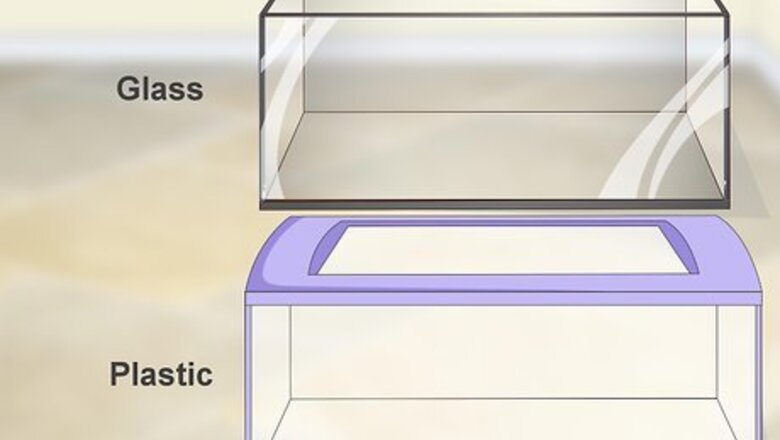
views
Setting up the Enclosure

Choose either a glass or plastic vivarium. Plastic cages are sturdier and last longer than glass cages. They have grates on each side for airflow, and they can be heated from below using heating pads. Alternatively, you can buy specially made glass reptile enclosures, or use a 75 gallons (280 L) aquarium. The tank must be at least as long as the snake. This species gets 3-5 feet and is very active. Make sure that you choose one made for snakes so your corn snake doesn't escape. Prevent the snake from escaping with heavy objects on the lid of clamps. Exo Terras, which open from the front, are expensive brand new but great for taming. They are very secure and come with locks. A wooden tank is also an option. Plastic vivariums are lighter and can be moved more easily. They are also easier to clean. Glass enclosures let you see the snake easily, but they let more heat out. They also are more fragile.

Buy a vivarium that is the proper size. If the vivarium isn’t big enough, it can stress your snake out to the point of illness. The width and height of the vivarium can be a third of their length. An adult snake of 60 inches (152 cm) needs a vivarium that is 60 inches (152 cm) long, 20 inches (50 cm) tall, and 20 inches (50 cm) wide. You can also use a 40 gallon (151.4 L) tank. Just make sure it is long enough for the snake. For baby snakes, you should buy a smaller vivariums because they can get upset in a larger tank. You can try a 10 gallon (37.9 L) or 20 gallon (75.7 L) vivarium. Upgrade to an adult-sized vivarium as your snake grows.
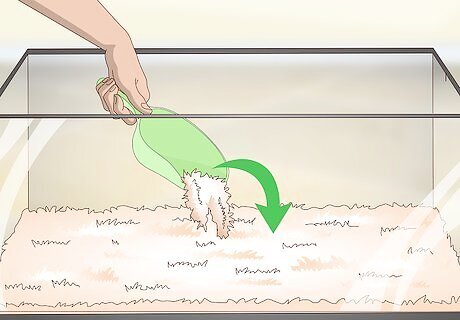
Place substrate in the bottom of the cage. Substrate is what you use at the bottom of the enclosure. It should be thick enough that your snake can bury itself in it and hide. There are many different materials you could use for the substrate. Use aspen shavings as these snakes love to burrow. Line the bottom of the enclosure with two to three inches of the substrate. You should avoid using cedar shavings, pine shavings, or aquarium gravel. Cedar and pine shavings have oils in them that can be toxic to your snake. Avoid using corn cob bedding because it can cause excessive drying to the snake’s skin and also poses a serious choking hazard if swallowed.
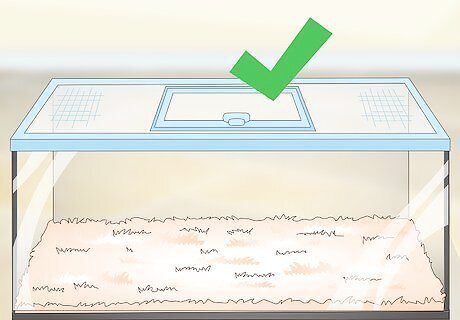
Ensure that the vivarium is secure. Corn snakes have a habit of getting out of habitats that are not secure. They are very strong and can push through the top of cages that are not securely sealed. They are also excellent at squeezing through holes that aren’t completely plugged. Make sure that the enclosure is closed tightly and has some kind of locking or clamping mechanism.
Creating the Right Environment
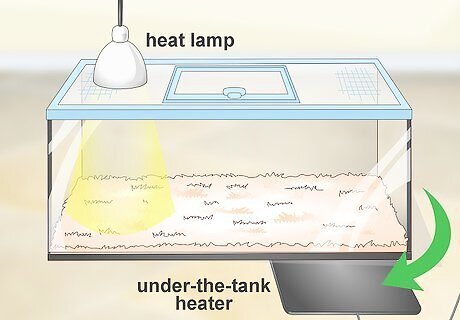
Provide a heat source. Snakes require outside sources of heat because they are cold-blooded, meaning they can’t generate their own heat. An under tank heater that spans 1/3 of the tank’s floor is ideal. Ceramic heat emitters are good for extra heat. The warm side temperature should be about 85 degrees Fahrenheit.
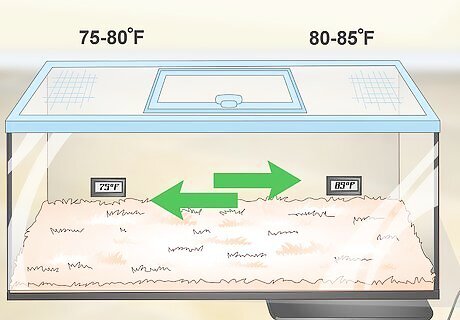
Keep the temperature regulated. Corn snakes should have a warm side and a cool side to their tanks so they can move around to warm up or cool down depending on their needs. The warm side is the one with the heat lamp or heater. The warm side should be around 80–85 °F (27–29 °C), and the cool side should be about 75–80 °F (24–27 °C). Place the under-the-tank heater on the side of the tank that will be the warm side. Make sure it doesn’t take up more than half the enclosure. Use a thermostat to regulate the temperatures on each side. Check each side with a digital thermometer each day by placing the thermometer into the substrate.
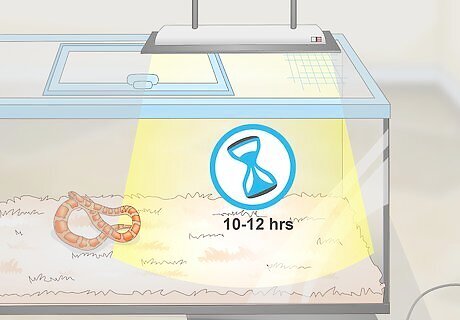
Provide a daily cycle of light and dark. For your corn snake to be at their optimal health, they should have daily light and darkness. Indirect light from a window is sufficient. If this is unavailable LED or UVB (beneficial but not completely necessary) will suffice. Place the light on the warm side of the vivarium, making sure the cool side has less light, providing a “shaded” area away from the “sunny” area. The snake should have 10 to 12 hours of light each day.
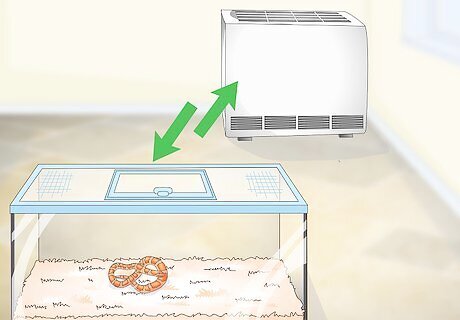
Place the vivarium away from anything that will affect the temperature. Vivariums should be placed in an area or room that is basically temperature controlled. They should not be near drafts or vents that can blow air on them, and they should not be near heaters. You should also not place the vivarium near any windows or in areas that get direct sunlight. This can also affect the temperature inside the vivarium. The vivarium should have some form of ventilation but keep in mind that too much air flow can change the temperature of the vivarium.
Including the Right Accessories
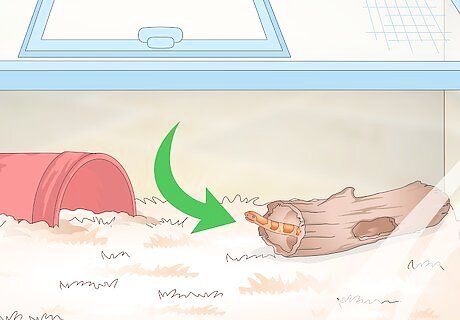
Provide places for your snake to hide. Corn snakes spend a lot of time hiding in the wild, so your corn snake will need places to hide to make them feel safe. You can turn anything into a hiding spot as long as your corn snake can hide completely so it’s not seen. It should be large enough for your snake to get inside and move around, but snug so the snake can touch the sides and feel secure. Hiding spots are essential to your snake’s health. Make sure the material the hide is made out of is easily cleaned and replaced. For example, you can make hides out of drip trays, litter boxes, or plastic tubs. Place one hide on the warm side and another on the cool side. You can even place a hide in the middle. This allows them to be secure on either side.
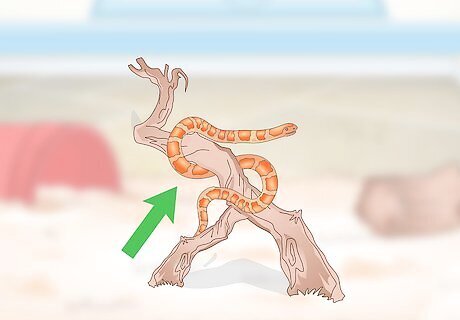
Add climbing branches and plants. Corn snakes are partially arboreal snakes, which means they spend time in trees and like to climb. You can provide artificial plants and climbing branches in the vivarium. This will provide stimulation, comfort, and more hiding places. This is great for enrichment. Artificial plants, leafed vines, and other artificial foliage can be placed anywhere throughout the vivarium. Try to provide more than one plant. This will give your snake a range of spots to climb and relax. Make a climbing branch or buy one from your local pet store. They can be placed wherever you like but make sure the snake can climb on it, it can handle the snake’s weight, and it’s small enough for the snake to curl around.
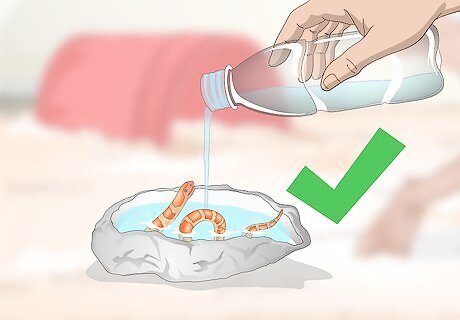
Place a water bowl with fresh water. You should always provide your pet snake with a water bowl filled with fresh, bottled water. They should be able to drink whenever they want. You can buy any type of water bowl as long as it will fit in the cage. The snake should be able to get their entire body inside the bowl to soak. Do not use tap water as it contains chlorine and fluoride which are toxic to your snake. Water softeners add too much sodium to the water, and distilled water removes nutrients your snake needs, so give your snake spring water. However, tap water can be used if left out for 24 hours. Countries such as the United Kingdom and Germany do not have chlorine in their tap water so tap water from these places is safe. Reptisafe is a great way to surest water. It’s cheap, convenient, and adds beneficial things to the water. Clean the bowl once each week, and clean and disinfect it immediately if the snake messes in it.










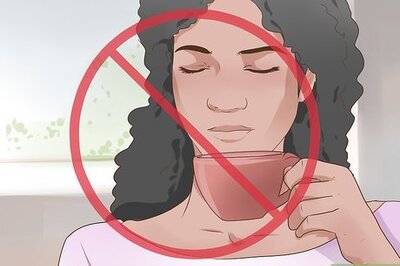



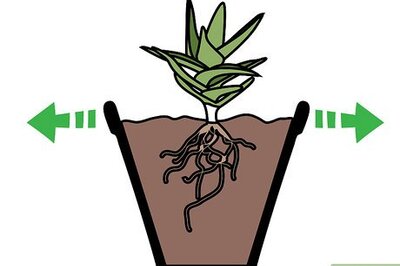




Comments
0 comment